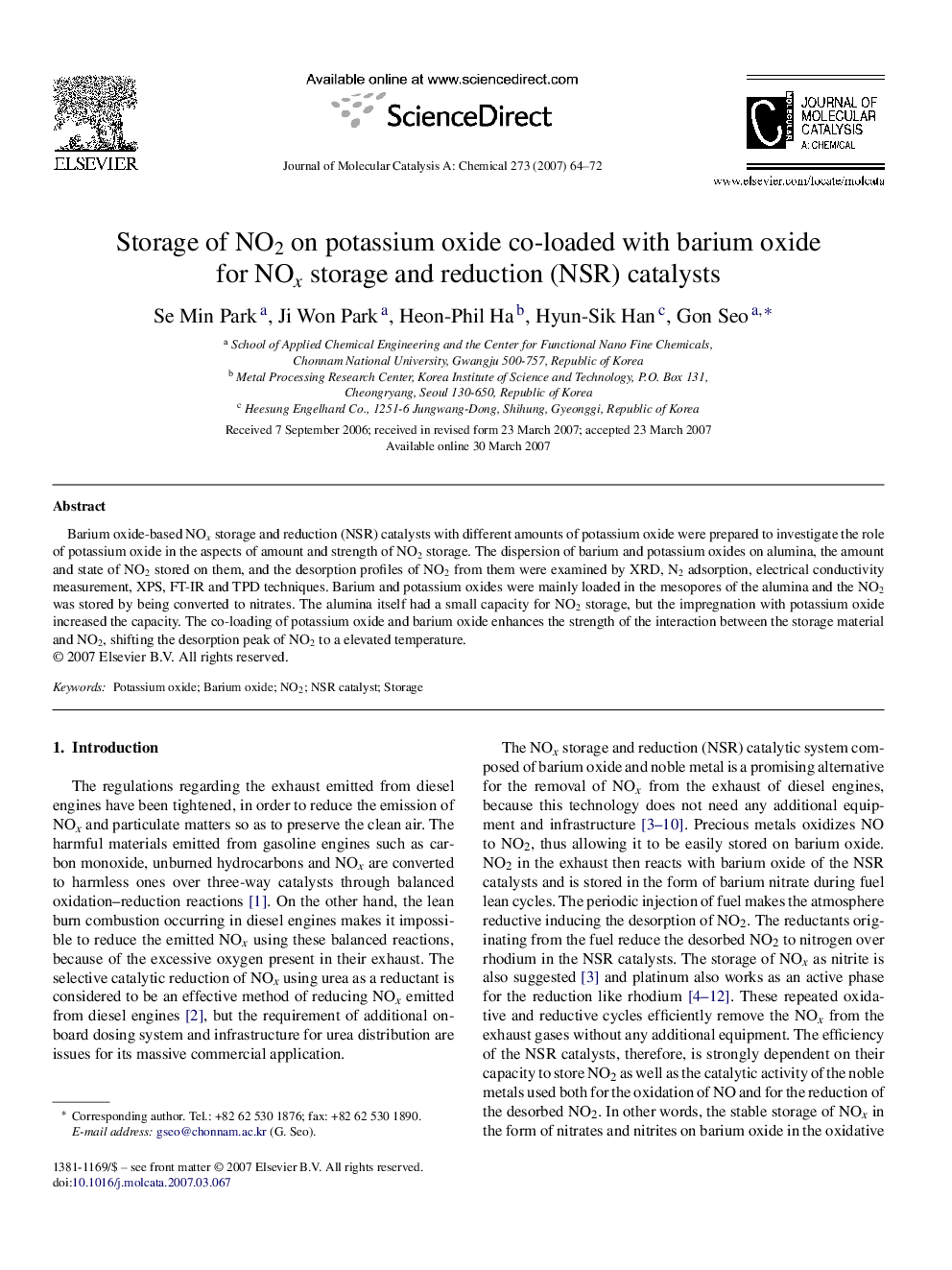| Article ID | Journal | Published Year | Pages | File Type |
|---|---|---|---|---|
| 67874 | Journal of Molecular Catalysis A: Chemical | 2007 | 9 Pages |
Barium oxide-based NOx storage and reduction (NSR) catalysts with different amounts of potassium oxide were prepared to investigate the role of potassium oxide in the aspects of amount and strength of NO2 storage. The dispersion of barium and potassium oxides on alumina, the amount and state of NO2 stored on them, and the desorption profiles of NO2 from them were examined by XRD, N2 adsorption, electrical conductivity measurement, XPS, FT-IR and TPD techniques. Barium and potassium oxides were mainly loaded in the mesopores of the alumina and the NO2 was stored by being converted to nitrates. The alumina itself had a small capacity for NO2 storage, but the impregnation with potassium oxide increased the capacity. The co-loading of potassium oxide and barium oxide enhances the strength of the interaction between the storage material and NO2, shifting the desorption peak of NO2 to a elevated temperature.
Graphical abstractThe strength of NO2 storage on barium oxide-based NOx storage and reduction (NSR) catalysts is significantly enhanced by addition of potassium oxide. The TPD profiles of NO2 from (a) Al2O3, (b) BaO (0.50)/Al2O3, (c) K2O (0.40)/Al2O3, and (d) K2O (0.70)–BaO (0.50)/Al2O3 catalysts clearly show the role of barium oxide as a material for NO2 storage and that of potassium oxide in enhancing the interaction between NO2 and the NSR catalysts. Figure optionsDownload full-size imageDownload as PowerPoint slide
